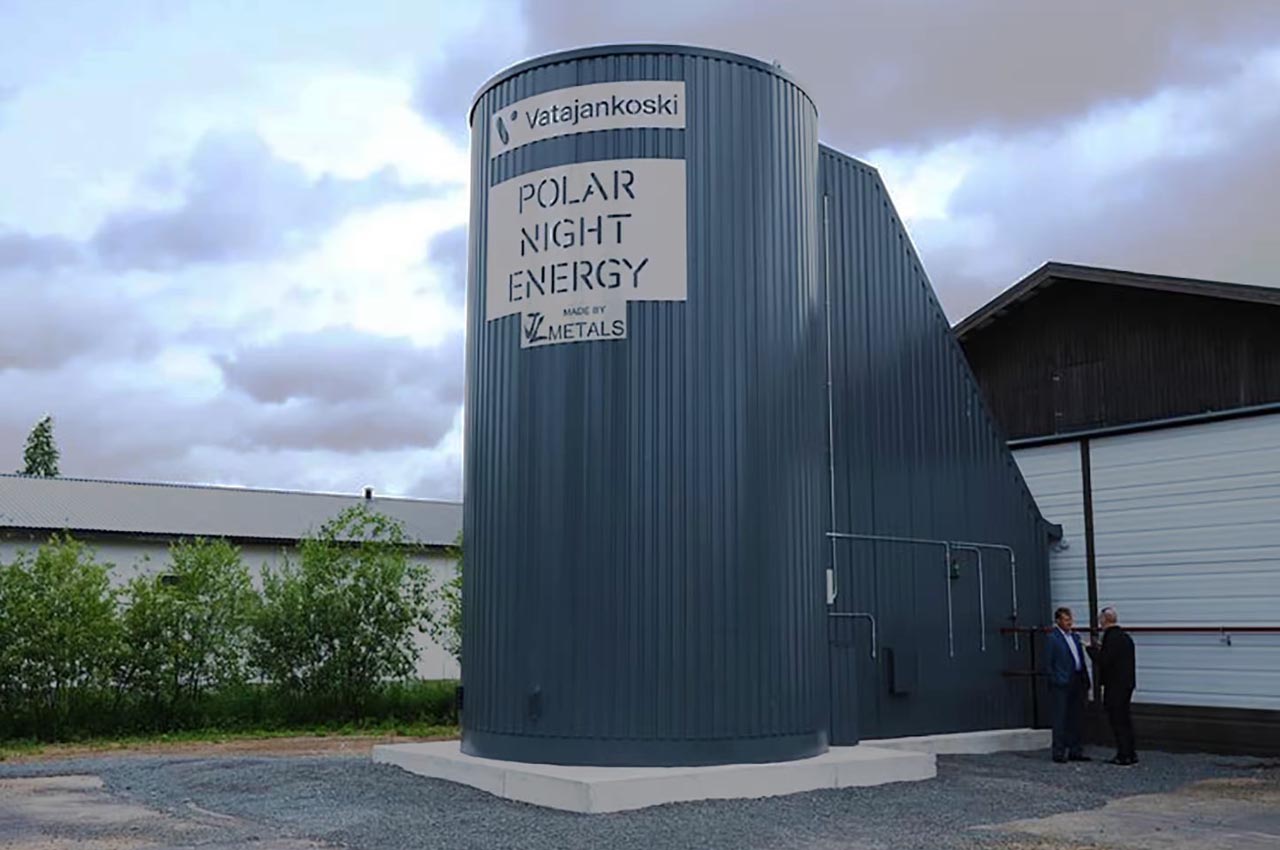Enter sand, man

For when the sun doesn’t show and the wind doesn’t blow, sand may just be an option for thermal energy storage.
The world’s first commercial sand-based thermal energy storage system has been developed to back up a heating network in Finland.
Technology company Polar Night Energy and utility organisation Vatajankoski have joined forces to create the system, which is adjacent to a power plant. Boasting 100kW heating power and
8MWh capacity, it can heat the sand up to 500–600°C through renewable energy.
The system provides low-emission district heating.
Tonnes of sand
The system is based around a large steel container that holds hundreds of tonnes of sand. Vatajankoski uses the system to ready the waste heat recovered from data servers to feed into the district heating network to the town of Kankaanpää.
Polar Night Energy chief technology officer Markku Ylönen says the
construction of the storage followed a logical path.
“This innovation is a part of the smart and green energy transition,” he says. “Heat storages can significantly help to increase intermittent renewables in the electrical grid. At the same time, we can prime the waste heat to usable level to heat a city. This is a logical step towards combustion‑free heat production.”
Heat storages can significantly help to increase intermittent renewables in the electrical grid.
Stable and renewable
Ylönen believes this heat storage method is a more stable renewable energy source.
“Production of renewable energy sources such as wind and solar power is highly volatile,” he says. “Our technology provides a way to refine cheap and clean surplus electricity to valuable heat in an affordable way to be used when most needed.”
Like many European countries, Finland has relied in recent times on cheap Russian gas for its heating needs. Yet following the invasion of Ukraine and in the aftermath of Finland’s decision to join NATO, Russia has now halted gas and electricity supplies to the country.
Like to know more?
The BBC has produced a video about the facility.

This article appears in Ecolibrium’s August-September 2022 edition
View the archive of previous editions
Latest edition
See everything from the latest edition of Ecolibrium, AIRAH’s official journal.





